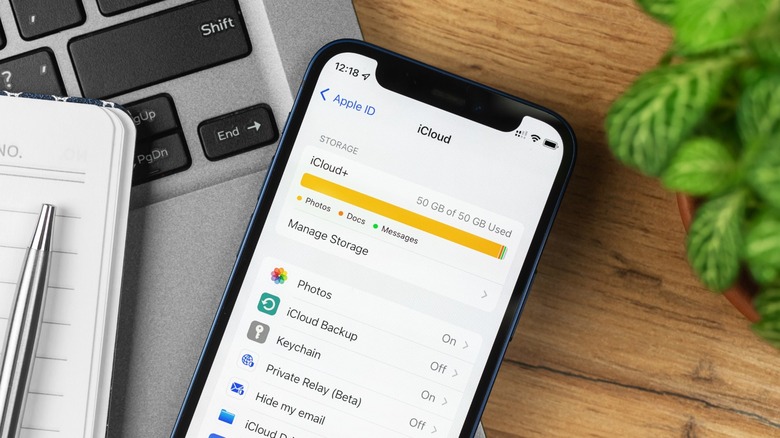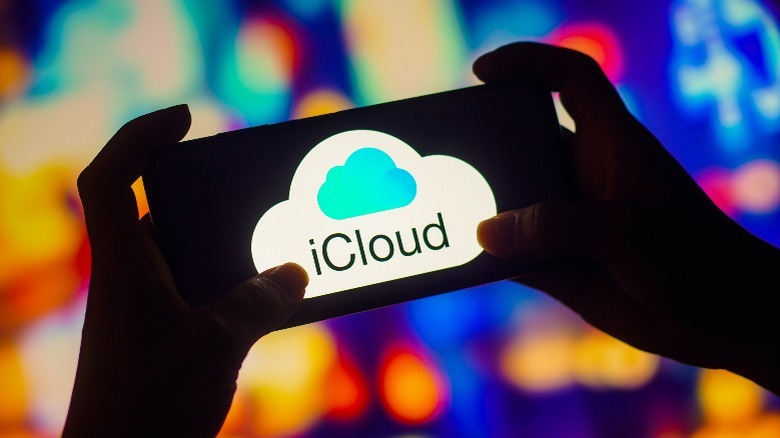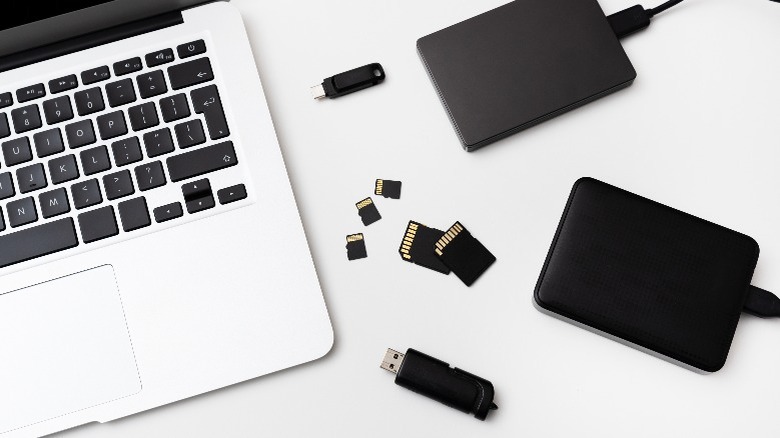How To Get More Storage On Your iPhone Or iPad
Gone are the days of 16 GB iPhones when managing storage used to be an acquired skill. Even so, in this modern age of smartphones where the base variants start at 64 or 128 gigs, the pesky little "low storage" warning dialog box is still inevitable for most of us. To make matters worse, iPhones and iPads don't come with support for expandable storage using external memory cards. Not only are apps and games increasing in size, but the corresponding app data has also been getting quite comfortably dense. With the ever-improving camera sensors and the addition of features like the ProRAW mode on iPhones, it is baffling how quickly you can chug down gigabytes of your phone's valuable storage.
You could always buy a newer, more expensive iPhone at an expansive storage tier, but there are ways to make the most of what you already have and get more storage space on your current phone or iPad. These methods are not only getting increasingly more common thanks to the growing need for digital repositories but also affordable and easily accessible.
Expanding storage using iCloud
Using Apple's iCloud service is the fastest way to add storage to your iPhone or iPad. iCloud syncs between all the devices connected to your Apple ID and lets you move over local data including photos, videos, contacts, and other files to the cloud. With the right toggles enabled, you could back up your entire iPhone using iCloud and never worry about losing precious data in the event of theft or damage.
Every Apple device user receives 5 GB of free iCloud storage. Realistically, you'd want to purchase more storage and can do so by following the steps below:
- On your iPhone or iPad, launch the Settings app and tap on your name card at the very top.
- Navigate to iCloud > Manage Account Storage > Buy More Storage or Change Storage Plan. The labels for these options might differ if you already have a subscription to iCloud+ and are seeking a higher storage tier.
- Select a plan that suits you, and purchase the subscription using your preferred mode of payment.
Alternatively, you can buy more storage on iCloud using the app on your macOS or Windows device. Also note that, while many features of iCloud and its native integration make it a good choice for when you're running low on storage, there are other cloud services that offer better deals and work just as well across all your iOS devices.
Using external storage on your iPhone or iPad
If you need temporary storage, maybe a buffer for when you're downloading a huge file, using an external device to expand your phone's storage capacity is not a bad idea. Yes, this clearly isn't a solution to the overall problem, but with the newer iPhones coming with the handy dandy USB-C port, connecting external media has never been easier. You just need a USB-C thumb drive or an external SSD lying around, or simply any hard disk with the right dongle. Any supported drive will show up in the Files app on your iPhone or iPad.
This is a quick and easy way to offload your older photos and videos without having to pay for a monthly subscription to a cloud service. If you're truly struggling with low storage, you ought to take a minute to find and delete unused apps on your iPhone. Another reason phones run low on storage despite having fewer apps is due to duplicate and redundant media which can pile up due to bad app restores. Fortunately, iOS 16 has a one-tap solution to delete duplicate photos and videos which can free up your iPhone's storage significantly.


